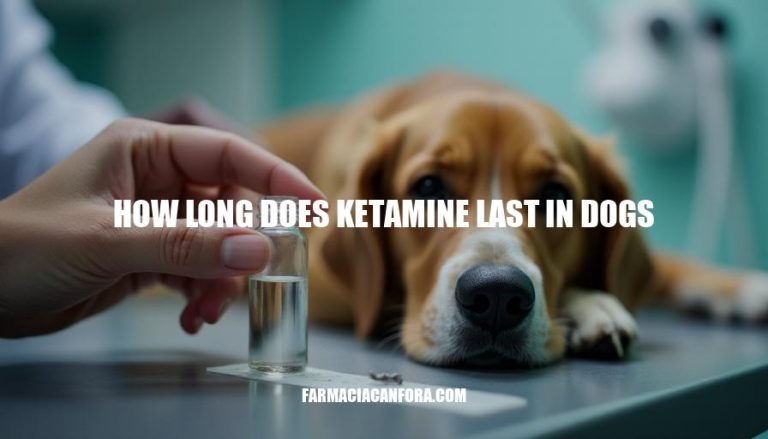


Ketamine is a commonly used anesthetic in veterinary medicine, particularly for dogs. Understanding how long ketamine lasts in dogs is crucial for veterinarians to ensure effective pain management and safe anesthesia during procedures. Typically, the effects of ketamine in dogs can last around 20 to 30 minutes. This knowledge helps veterinarians plan surgeries and post-operative care, ensuring the well-being and comfort of their canine patients.
Ketamine works in dogs by acting as both an anesthetic and an analgesic. As an anesthetic, it induces unconsciousness and muscle relaxation, typically within 1 minute of intravenous injection or 10 minutes of intramuscular injection. This rapid onset is crucial for quick procedures.
For its analgesic properties, ketamine blocks NMDA receptors in the brain, which helps reduce pain perception and prevent central sensitization, a condition where the nervous system becomes overly responsive to pain stimuli. The analgesic effects can last for 2-3 hours, providing significant pain relief during and after surgical procedures.
Here are the key factors that influence how long ketamine lasts in dogs:
Dosage: Higher doses generally result in longer-lasting effects. However, the exact duration can vary based on the dog’s metabolism and health.
Method of Administration: Ketamine can be administered intravenously (IV), intramuscularly (IM), or orally. IV administration typically results in the fastest onset and shortest duration, while IM and oral methods may take longer to kick in but last longer.
Individual Dog Characteristics: Factors such as age, weight, overall health, and metabolic rate play significant roles. For example, older dogs or those with liver or kidney issues may metabolize ketamine more slowly, leading to prolonged effects.
These factors combined determine the overall duration of ketamine’s effects in dogs. If you have any specific concerns about a dog’s reaction to ketamine, it’s best to consult with a veterinarian.
Ketamine‘s duration of effects in dogs has significant clinical implications:
Surgical Procedures: Ketamine is often used as an anesthetic due to its rapid onset and relatively short duration, which allows for quick recovery post-surgery. Its ability to maintain cardiovascular stability makes it a preferred choice for surgeries.
Pain Management: Ketamine’s pain-modifying properties are beneficial for managing acute postoperative pain. It helps reduce opioid consumption and mitigates hyperalgesia and central sensitization, which can improve recovery and reduce chronic pain risks.
These factors make ketamine a versatile tool in veterinary medicine, balancing effective anesthesia with manageable recovery times.
Ketamine’s effects in dogs typically last around 20-30 minutes, with an onset of unconsciousness within 1 minute of IV injection or 10 minutes of IM injection. The analgesic effects can last for 2-3 hours.
Factors influencing the duration include:
Veterinary guidance is crucial in administering ketamine to ensure effective pain management and safe anesthesia during procedures.